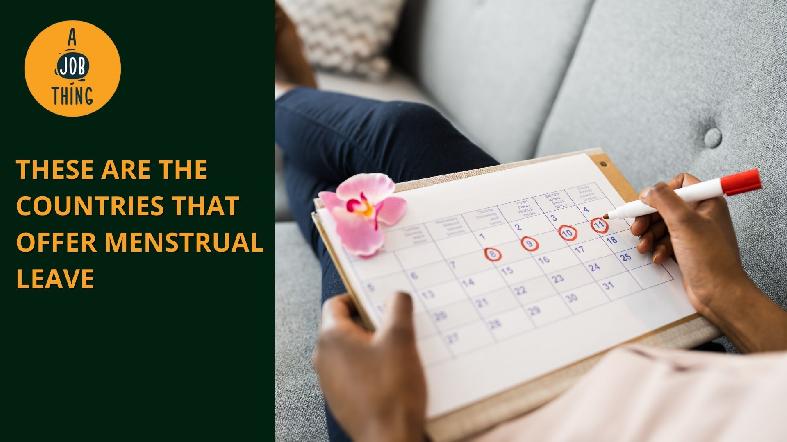
These Are the Countries That Offer Menstrual Leave
Are You Hiring?
Find candidates in 72 Hours with 5+ million talents in Maukerja Malaysia & Ricebowl using Instant Job Ads.
HIRE NOW
Many women suffer from painful periods, but only a few nations, especially in Asia, allow them to take a day off work to recover.
With a measure adopted by the government on Tuesday, Spain hopes to be the first western nation to follow their lead, allowing women to take unlimited leave for period pain if they obtain a doctor's certificate.
The plan comes amid a global feminist drive to break down taboos around menstruation, but it has sparked opposition from Spanish unions, who fear that, rather than liberating women, menstrual leave may encourage companies to hire males first.
Here's how it works in several other countries:
South Korea
Employers who fail to give women one day of unpaid menstrual leave per month in South Korea face fines of up to 5 million won (RM17,180).
Until 2004, when South Korea switched from a six- to a five-day workweek, the leave was paid.
In a 2018 poll, a little over 19 per cent of women took time off, which was more than in Japan. Many, however, stated that they are unable to do so due to conservative or hostile work environments.
Indonesia
In 2003, Indonesia established a law allowing women to take two days of paid menstruation leave per month without having to give advance notice. However, the clause is discretionary in reality.
Many employers only provide one day of menstrual leave every month, while others do not offer any at all, either because they are uninformed of the legislation or because they prefer to ignore it.
According to a 2003 International Labour Organization report, the requirement to provide women 24 days of menstrual leave in addition to their 12 days of annual leave represented a "substantial cost" for many businesses, causing them to discriminate against women in their recruiting policies.
Taiwan
The Act of Gender Equality in Employment in Taiwan provides women with three days of menstruation leave per year. They are not deducted from the statutory 30 days of sick leave.
Women are only allowed to take one day per month. Like those on sick leave, workers on menstruation leave only get half their pay.
Japan
A law dating back to 1947 in Japan states that employers must agree to provide women with menstrual leave if they seek it for as long as they need it.
It does not oblige them to pay women throughout this leave, but a 2020 labour ministry poll said roughly 30% of Japanese enterprises offer full or partial pay.
However, few women make use of the law. Only 0.9 per cent of eligible workers have taken menstrual leave, according to a survey of about 6,000 businesses.
Zambia
When Zambia approved a rule in 2015 authorising women to take a day off work during their periods without giving notice or providing a doctor's note, it became the envy of other African countries.
Although the policy is widely accepted and endorsed, not all employers voluntarily comply with what is discreetly called "Mother's Day."
Thanks to labour unions, women are beginning to use their rights, says Ruth Kanyanga Kamwi, a communications expert and women's rights advocate.
Some businesses are ahead of the curve
Some businesses have not waited until they are legally required to provide women with menstrual leave. Among them are:
-
The Victorian Women's Trust, an Australian gender-equality organisation, provides employees with 12 days of menstrual and menopause leave;
-
Zomato, an Indian food delivery startup, provides ten days of period leave; and
-
La Collective, a French cooperative, provides employees with up to one day of period leave per month.
Source: Free Malaysia Today

